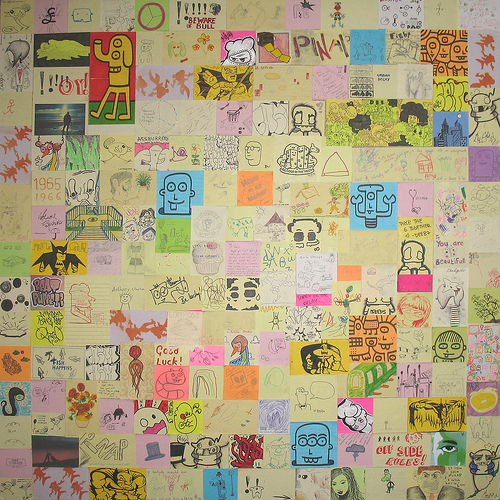 Abbotsford Mayor George W. Peary, in a press release on February 7, 2011, said “Public art is a vital component of healthy, prosperous, and innovative cities. The implementation of public art in a city, not only beautifies the community, but promotes creative expression and community engagement.” The statement came as part of an announcement that the city would allocate one per cent of its capital facility budget to public art. Peary continued to explain that “Public art is an important tool in defining and creating a unique sense of place for a city. As Abbotsford continues to grow, it is extremely important that we create opportunities for people that come to our City to understand and explore our heritage and our culture.”
Abbotsford Mayor George W. Peary, in a press release on February 7, 2011, said “Public art is a vital component of healthy, prosperous, and innovative cities. The implementation of public art in a city, not only beautifies the community, but promotes creative expression and community engagement.” The statement came as part of an announcement that the city would allocate one per cent of its capital facility budget to public art. Peary continued to explain that “Public art is an important tool in defining and creating a unique sense of place for a city. As Abbotsford continues to grow, it is extremely important that we create opportunities for people that come to our City to understand and explore our heritage and our culture.”
Now, the combination of the stress Peary has put on the importance of public art and the seemingly miniscule contribution he and the city are willing to put into it does not seem to sit well with art-minded individuals in the community. A quick and dirty poll I conducted of students in the arts at UFV finds that most think the budget is extremely near-sighted and unfair to artists. I would like, however, to argue the opposite. While it may seem like the voice of the diehard idealist, real art requires no funding, so the amount given is irrelevant.
It doesn’t take a lot of searching to find out that no one remembers William Wordsworth’s work as poet laureate, and even when they were paid, we all know that Michelangelo and Da Vinci took their time and did whatever the hell they pleased anyway – Pope be damned. So, why do we insist on living in a dream world where great works of art come about if we just throw around enough money?
Sure, it would be nice to get a government grant to just putter about and do exactly what you want to, but we all know that is no reality. Government funding comes with censorship and bureaucratic direction. The art, in short order, dies. We can’t blame the politicians either; they need things like progress reports to keep the people happy who pay their wages. What we end up with are nice murals in public spaces at best and government-praising films and poetry at worst. It’s true there are exceptions – Virgil’s Aeneid comes to mind – but the fact is that creative expression and bureaucratic oppression just don’t go hand in hand.
So, that one per cent starts to look more and more apt when you realize that it will be going towards “beautification” not art. The idea of an artist being paid for his or her art is one that is only fulfilled when he or she “makes it” – or sells out. You can apply for some of that sweet government green, but you’re going to be making dull paintings of peewee baseball teams to display at bus stops.
In Maxine Hong Kingston’s fantastic book Hawai’i One Summer, she recounts how the poet Lew Welch told her that real artists are too busy fixing cars to go to poetry readings. Maybe that’s it; perhaps real art can’t be paid for – or sold – maybe it just has to be experienced and exchanged between regular people. The government, even with the best intentions, will never pay for that. They couldn’t either; real art, after all, is priceless.


